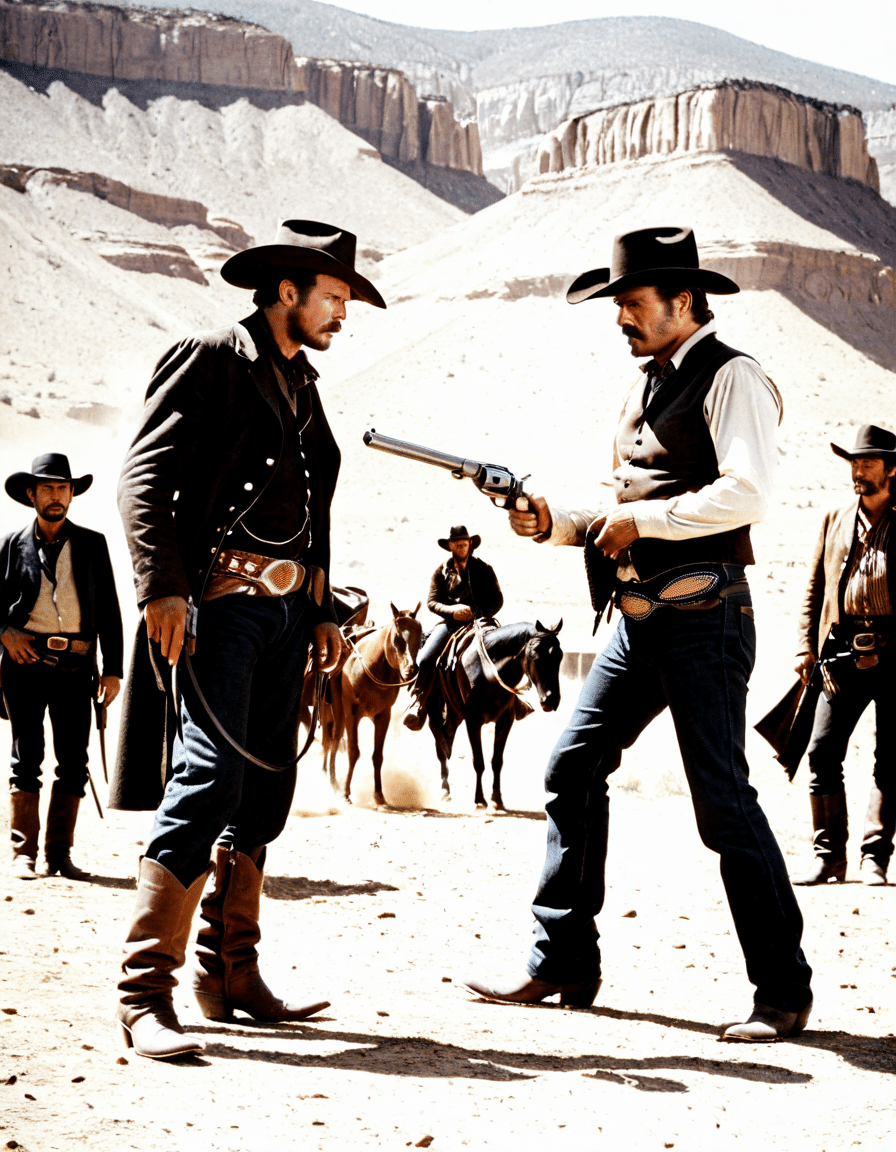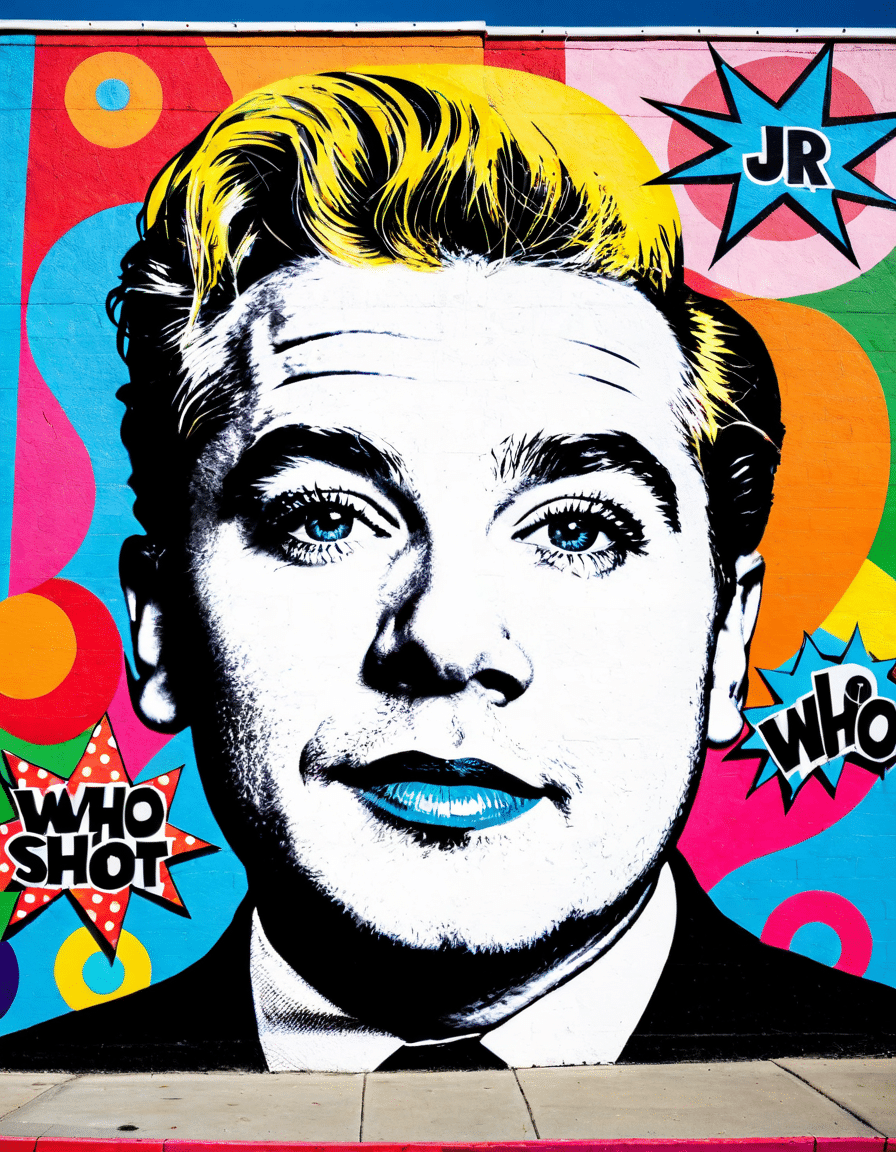
Who Shot Jr Is The Iconic Mystery That Captivated America
The question “Who shot J.R.?” remains etched in American pop culture, serving as a thrilling moment that took a small town in Texas and transformed it into a national obsession. When Dallas premiered in the late 1970s, few could anticipate the heights it would reach, particularly after the infamous cliffhanger episode that aired in 1980. Suddenly, J.R. Ewing, portrayed by Larry Hagman, became the target of the nation’s curiosity, sparking a guessing game that extended well beyond the television screen. Today, more than 40 years later, that question still resonates as an important part of television history.

## Who Shot Jr? The Iconic Mystery That Captivated America
1. Cultural Impact on Television
The cliffhanger episode that left fans scrambling for answers illustrated the unique power of serialization in television. This monumental moment didn’t just change the game for Dallas; it revolutionized how TV scripts would be crafted moving forward. Think about how shows like Lost and Game of Thrones took serialization to new heights with jaw-dropping plot twists. This game-changing shift got audiences talking and craving complex narratives, ensuring viewers would keep returning week after week.
2. Engagement Across Generations
The debate over “Who shot J.R.?” isn’t just limited to folks who watched Dallas in real-time. It reached younger audiences as well, thanks to remakes and nods in contemporary shows like Family Guy and even films. The title’s cultural weight keeps it relevant, akin to discussions ignited by the untimely death of rapper King Von and its implications in today’s music scene. This multi-generational engagement proves how pivotal TV moments can resonate, ensuring that even those who weren’t around at the time know about the mystery.
3. Social and Political Commentary
When you dissect the plot twists of Dallas, you unveil layers of social and political commentary. The show didn’t shy away from grappling with issues like power dynamics, betrayal, and family loyalty—elements mirroring the chaos of the 1980s that faced economic and political hurdles. In this light, J.R. Ewing becomes more than just a TV villain; he’s a cultural icon reflecting societal complexities that mirror contemporary narratives in shows today.
4. Merchandising and Marketing Blitz
The frenzy surrounding the “Who Shot J.R.?” storyline sparked one of the greatest marketing strides in television history. From T-shirts to mugs, a range of merchandise flooded the market, embedding itself into the American consumer culture of the 1980s. This idea of leveraging a pivotal moment isn’t lost on modern brands like Netflix, which excels in capitalizing on viral events—think of the spotlight on character arcs in Stranger Things that keeps audiences coming back for more.
5. Mystery and Audience Participation
The build-up to discovering J.R.’s assailant involved the audience in a unique way; viewers became amateur sleuths, passionately discussing theories. This shared experience mirrors the online communities that emerge around contemporary mysteries, whether it’s about high-profile crimes or sudden celebrity deaths. People actively participated in shaping the narrative and not just consuming it, a trend that continues today.
6. Media Frenzy and Speculation
The hype leading to the episode revealing the shooter led to a media storm, reminiscent of the buzz surrounding who from Whoville would redeem Christmas in The Grinch. The coverage wasn’t just for entertainment; it was a blueprint on how major television events could market themselves. Just as Super Bowl commercials now strive to capture that same level of excitement and anticipation, the reveal of J.R.’s shooter set a high standard for how television networks engage with audiences.
7. Legacy in Other Mediums
The influence of “Who Shot J.R.?” stretches well beyond the television screen, seeping into film and literature alike. Screenwriters now draw inspiration from the dramatic tension built around this mystery. Movies like Knives Out expertly weave intricate narratives where audience expectations play a crucial role, echoing the themes established by Dallas.

The Unraveling of the Mystery: Key Players and Theories Behind ‘who shot jr’
Once the bullets flew, Dallas presented a buffet of characters, each with compelling motives for wanting to take down J.R. This classic whodunit structure built a rich narrative that still influences crime dramas today.
These roles illustrate archetypes still seen in today’s storytelling, building thematic connections to more recent characters like Walter White from Breaking Bad, highlighting moral quandaries and personal evolution.
The Enduring Curiosity of ‘who shot jr’ in Modern Pop Culture
The phrase “Who Shot J.R.?” has grown into a symbol that embodies the intrigue and excitement surrounding storytelling. It reflects not only the cultural appetite for mystery but also the kind of engagement that fans of pop culture share across generations. This narrative curiosity parallels contemporary discussions surrounding unresolved dilemmas, like who killed King Von, showcasing that the love for a good mystery remains timeless.
As the landscape of television continually evolves, the thirst for an answer to “Who shot J.R.?” stands as a powerful testament to the staying power of serialized drama. It captures an audience’s imagination both at the time and generations later, ensuring that storytelling remains a living, breathing part of our culture. The fascination with unraveling mysteries like these signifies that they are not just relics; they are emerging tales that will continue to challenge and captivate audiences as they unfold.
In the end, whether we’re pondering the fate of characters on a fictional show or questioning the real life implications of iconic stories, the pursuit of resolution is part of what makes storytelling so irresistible. Dallas taught us about suspense, engagement, and the importance of a good story—lessons that the world of entertainment continues to uphold as new narratives emerge.
who shot jr? The Iconic Mystery That Captivated America
The Buzz Behind the Whodunit
Ah, “who shot jr?”—a question that sent shockwaves through living rooms across America in the early ’80s! The suspense surrounding the infamous shooting of J.R. Ewing, played brilliantly by Larry Hagman on Dallas, had audiences on the edge of their seats. Did you know that the mystery was so gripping that Lana Wood, notably an actress from Diamonds Are Forever, had her own theories about the plot twists? You can find her musings over at Lana Wood’s insights here.(
Interestingly, the episode featuring the iconic shooting was a television phenomenon. It drew in a staggering 83 million viewers—more than half of the country! Quite something for a little episode, right? This level of buzz surely made Hollywood realize that drama-packed cliffhangers were a goldmine. It’s reminiscent of how certain indie films, like those featuring the cast of Dinner in America, keep viewers guessing until the final moments.
The Theories and the Aftermath
Cast your mind back to those thrilling days when the speculation was as intense as the show itself. Fans concocted wild theories about who shot jr, keeping gossip bubbling in every neighborhood. Some even compared it to the frenzy over characters in comic series, such as characters from the Deadpool Comics. The sheer unpredictability of the plot not only kept viewers engaged but also influenced how mysteries were crafted in television and film thereafter.
For a mood change, let’s pivot a bit. Did you know that the shooting led to an unforgettable storyline leading up to J.R.’s ultimate return? Just as plot twists keep viewers intrigued, so too does the eclectic mix of genres in media today—think about how the visuals in anime, like stunning anime girl wallpaper, can captivate audience attention. Whether it’s a dramatic shootout or vivid animation, storytelling today is about grabbing the audience and keeping them hooked.
Cultural Impact and Legacy
The aftermath of “who shot jr?” solidified the series as a cultural touchstone. It transformed not just how we viewed soap operas but also established a bold new era for television writing. Shows started integrating cliffhangers regularly, shaping narrative arcs and making viewers reliant on the next big reveal. Think of it like discovering brand new characters in games like The found here), where unexpected revelations keep players coming back for more.
And let’s not forget the significant locations tied to the legacy of “who shot jr?” One of the lesser-known spots is Calvary Cemetery, where many scenes capturing somber moments were filmed. This iconic place resonates with those dramatic scenes, becoming part of television history—check it out here. So, as we raise our glasses to this mystery that captivated our hearts and minds, we can appreciate how “who shot jr? influenced both TV narratives and popular culture—forever etched in the annals of media history with a tantalizing question that has never quite faded away.










